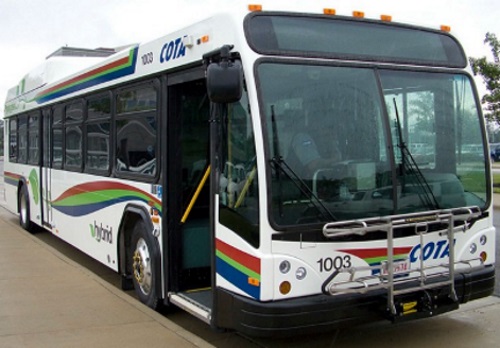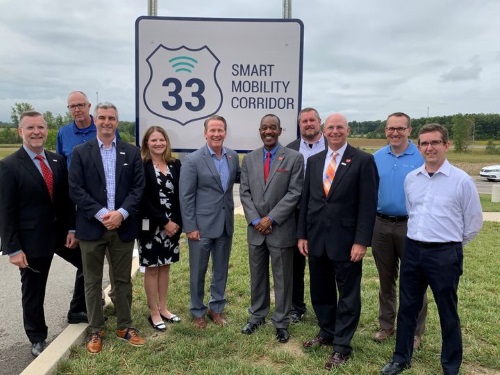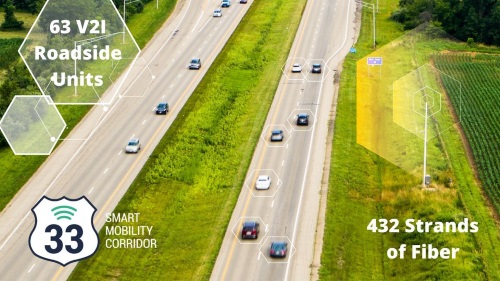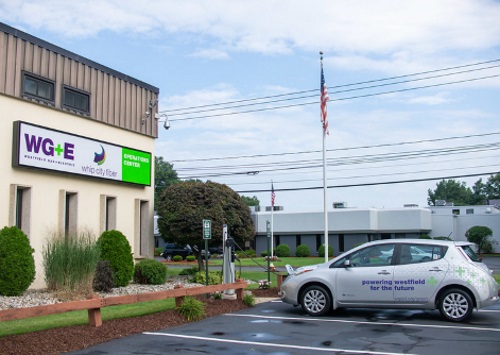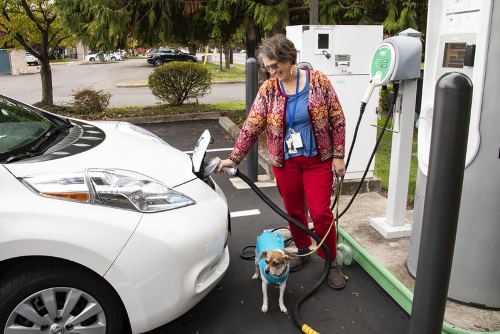The Ohio Diesel Emissions Reduction Grant or DERG program recently awarded six grants totaling more than $9 million for replacing 25 aging diesel transit buses with cleaner diesel or alternative fuel technology. The Ohio Department of Transportation and Ohio Environmental Protection Agency jointly administer the state’s DERG program.
[Above photo by the Ohio DOT]
In a statement, the Ohio EPA estimated that those new buses should cut emissions by more than six tons of air pollutants annually; an air quality benefit that should continue to accrue each year the new buses remain in service.
Projects receiving funding include:
- Central Ohio Transit Authority, which received $1.96 million to cover 80 percent of the cost to replace four 2009 diesel-powered buses with four new units powered by compressed natural gas or CNG.
- Greater Cleveland Regional Transit Authority, which received $1.97 million for 61 percent of the cost to replace six 2005-2006 diesel powered buses with six new CNG-powered buses.
- Greater Dayton Regional Transit Authority, which received $1.2 million for 80 percent of the cost to replace three 2010 diesel-powered transit buses with three new diesel-powered buses.
- METRO Regional Transit Authority, which received $855,000 for 80 percent of the cost to replace two 2010 diesel-powered buses with two new CNG-powered buses.
- Portage Area Regional Transportation Authority, which received $1.1 million for 70 percent of the cost to replace three 2003-2005 buses with three new CNG-powered buses.
- Stark Area Regional Transit Authority, which received $2 million for 80 percent of the cost to replace seven 2010-2016 diesel-powered buses with six new CNG-powered buses and one hydrogen fuel cell-powered bus.
Funding for those DERG grants comes from the Federal Highway Administration’s Congestion Mitigation and Air Quality program. The Ohio DOT noted that the next DERG application deadline occurs in the fall of 2022.

